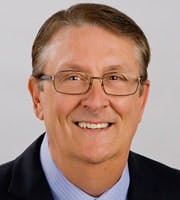The city of Des Moines Water Reclamation Authority (WRA) and Des Moines Water Works have signed agreements with the U.S. Department of Energy (DOE) Advanced Manufacturing Office to pursue Superior Energy Performance (SEP) certification. SEP is a certification and recognition program for facilities demonstrating energy management excellence and sustained energy savings. The Des Moines WRA and Water Works are the first two water/wastewater operators to pursue SEP certification in the water/wastewater industry sector.
The certification process can take 12-24 months to complete. Both facilities will be working with a DOE select energy consulting group, verifying and validating each individual energy consumption improvement that has been implemented at both facilities.
“Today, managing the operating performance of water/wastewater facilities is complicated,” says William Stowe, Des Moines Water Works CEO and general manager. “With the typical aging infrastructure, there is always something breaking or needing to be maintained and projects to manage. On top of that, many water/wastewater utilities face lower revenues combined with the potential for increasing costs, forcing managers to take a hard look at ways to either increase revenues or reduce expenses. One area that can certainly help the realities of this economic outlook is the potential expense reduction in energy consumption, a water/wastewater facility’s second highest expense, not to mention the potential added benefit to the environment.”
Stowe says, “Water/wastewater is an energy-intensive operation. There are in excess of 75,000 water and wastewater systems in the United States, over 500 in the state of Iowa alone, estimated to consume well over 150 billion kWh a year, approximately 5% of the total U.S. electricity consumed. It is simply no longer an option to address water/wastewater energy efficiency. It is a mandate”
Understanding and quantifying how much energy the actual systems or components within water/wastewater operation use, let alone individual pieces of equipment, and establishing design baseline efficiencies typically has not been done, explains Miller. “At best, there is a main electrical meter and a few sub-meters that help the operator try to isolate what is going on,” he says. “Without detailed energy and asset information, managers can’t identify opportunities for improvement. They can’t easily figure out what to do and they can’t validate the savings from energy efficiency measures.”
However, workers at the Des Moines WRA and Des Moines Water Works are making measurement a priority. “We at both the Des Moines WRA and Des Moines Water Works believe that detailed electricity data is a key component that is missing and everybody needs. It’s actually pretty simple; you can’t manage what you don’t measure. The SEP program will build upon existing infrastructure and operating technology investments, including both Motors@Work and Infor’s Energy Performance Management solution,” adds Miller.
“Working off the results of U.S. manufacturing companies that have achieved SEP certification, which involves implementing the ISO 50001 energy management standard, we expect to identify additional energy savings,” says Miller. “The independently verified SEP energy savings will be valued by our water/wastewater operation and finance executives.”
SEP and ISO 50001
SEP is based on independent certification of ISO50001, which calls for organizations to establish a systematic and reliable way to investigate the relationship between energy usage and managing assets, from policy to the plug. It specifies requirements for “establishing, implementing, maintaining, and improving an energy management system, whose purpose is to enable an organization to follow a systematic approach in achieving continual improvement of energy performance, including energy efficiency, energy use, and consumption.” It also addresses energy cost issues as a way to demonstrate both the financial and environmental benefits, which can be realized through systematic energy management.
An ISO 50001 based policy is effectively a statement by the organization that outlines its overall intentions and direction relating to energy performance, as formally expressed by senior management. Providing a framework for action and for the setting of energy objectives and energy targets, it defines organizational alignment; provides for formal energy review mechanisms; establishes baseline measurements; highlights energy performance indicators; details action plans; lists operating controls and procedures; establishes guidelines for the measurement, verification, and documentation used to evaluate the program; and lists the management controls needed to keep the program operational. SEP independently validates this process enablement and certifies the results.
SEP certification of the adoption of ISO 50001 as a standard against which an organization measures its energy management efforts has a number of clear benefits. It strengthens commercial and industrial organizations’ focus on energy, and it injects discipline across silos within the business. It creates an opportunity for the cultural shift necessary to take place and encourages commitment to the program across an enterprise. Crucially, it links energy reduction goals directly with an organization’s profit or efficiency, which go directly to the bottom line.
“This is particularly important in the process industries such as water/wasterwater where energy comprises in excess of 60% of the O&M expense,” says Miller. “It is the leading expense outside of labor.”
Having the right tools
“SEP certification will validate our systematic convergence of energy and asset management at Des Moines WRA,” elaborates Miller. “Our Infor enterprise asset management (EAM) Energy Performance Management application has an asset-specific structure. It not only manages each asset as either an individual item, like a motor, or as a group, like a pumping system, but incorporates the ability to capture the energy consumption and cost within the asset structure. An energy efficiency program needs this asset-specific approach to capture the energy design basis to identifying those assets and system non-conformity that need addressed. Clearly, the energy convergence with Infor EAM is the best application space for systematically managing this process. It is no longer a viable asset management strategy to simply manage one’s assets for optimal performance. Today, the moral mandate is to manage one’s assets for optimal performance at the least energy cost.”
The key, at least in the motor-driven world, is motor-driven system energy intelligence, says Miller. “Without that, we simply do not have actionable intelligence,” he says. “We have adopted a new market offering, Motors@Work, which is uniquely qualified to provide the intelligence when and where it’s needed and to the person who needs it. Motors@Work will systematically support the identification of inefficient or oversized motor-driven non-conformities and operating and design change modifications initiating and communicating repair and replacement countermeasures to Infor EAM, and determining potential savings. Power quality will also be monitored and anomalies identified in order to meet a motor-driven systems rated efficiency and performance levels. As we look to attain DOE Superior Energy Performance certification, Motors@Work coupled with Infor EAM Energy Performance Management will play a critical role in their ability to do so as well, accomplishing efficiency objectives.”
The future
The Iowa Economic Development Authority (IEDA) is working closely with both the Des Moines WRA and Des Moines Water Works in an effort to replicate the water/wastewater energy efficiency capabilities throughout the state. IEDA intends to provide these facilities with the requisite resources and software. This will enable the water facility operator to:
- understand how the water/wastewater facility’s energy efficiency performance compares to design standards and industry benchmarks
- make informed decisions regarding the best return on investment for addressing energy efficiency non-conformities and improvement opportunities.

